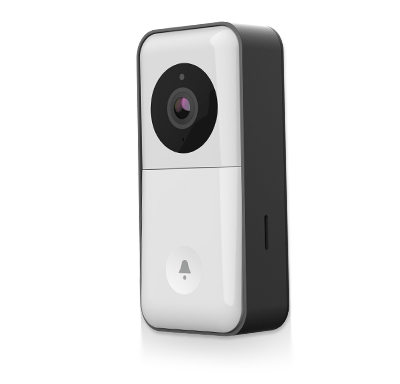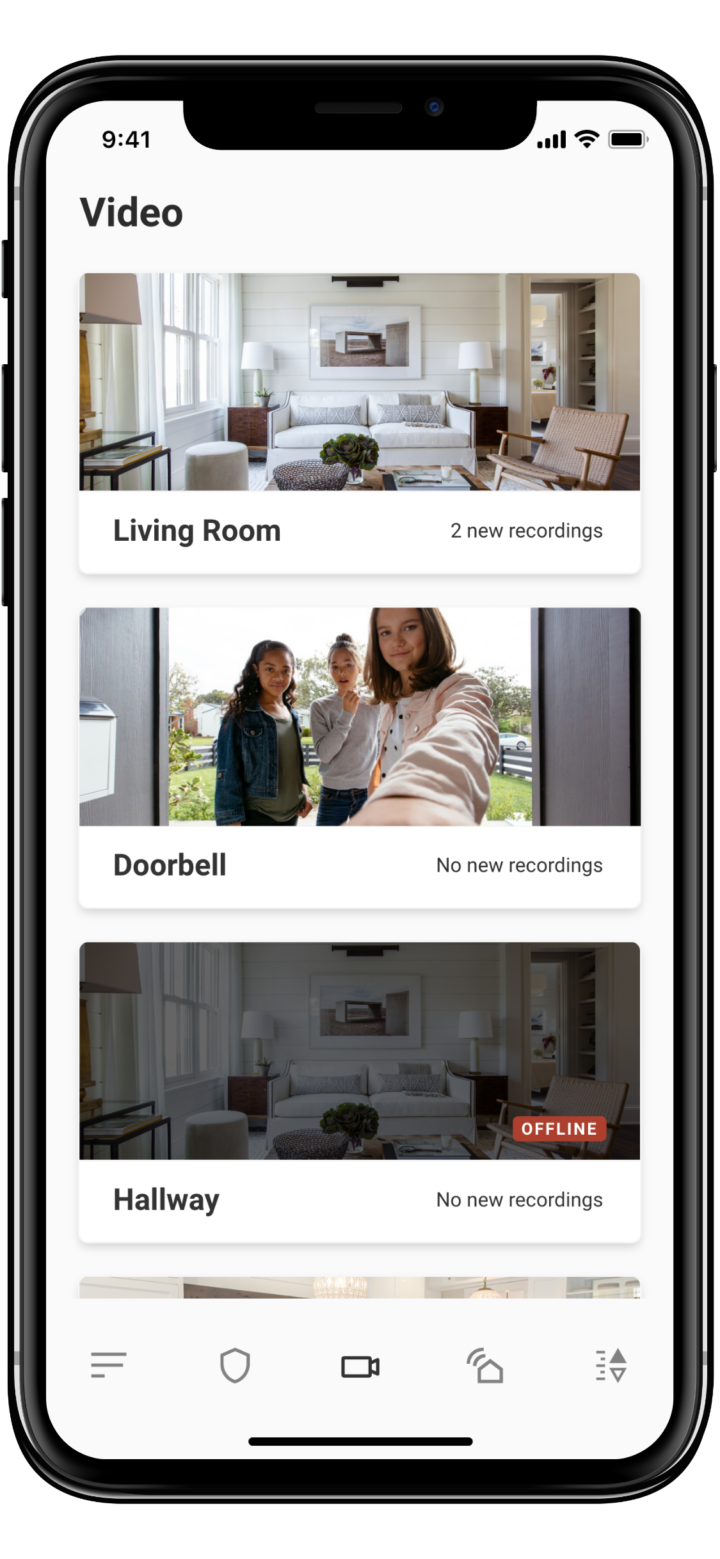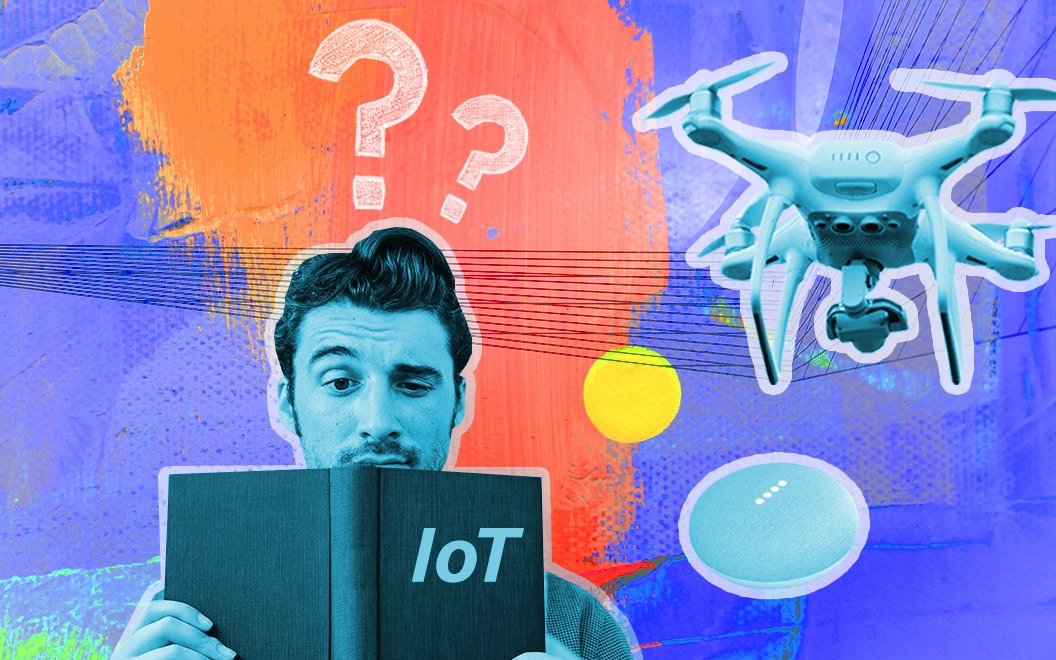In our previous article, What Is IoT and How Does It Work Part 1, we gave you a basic overview of the origins and purpose the IoT landscape. In Part 2, we’ll dig into the different components of the IoT.
HARDWARE
First, the heart of the IoT is sensors and devices that allow us to sense the physical world around us. This is done through the collection of actionable data. Take your phone, for example. Your smart phone has a series of connected sensors (camera, accelerometer, GPS, etc.) that work together allowing you to understand your environment and/or perform a task.

But, the hardware, in and of itself, is useless without a form of firmware that’s capable of allowing the hardware to communicate with other, more advanced software. This may include communicating with other sensors and devices, or it may include communication with software programs capable of analyzing the captured data (more on that later). Simply put, the hardware/firmware combination is used to capture relevant, actionable data.
CONNECTIVITY AND CLOUD INTEGRATION
Next is the connectivity component of the IoT. Once the data is collected, it has to be sent somewhere in order to become actionable. The data must have a “road” to follow in order to arrive at its home on “Actionable Blvd”. Network connectivity and cloud integration enable devices to communicate with each other and with applications and services running on the cloud. Cloud infrastructure is used for analysis, data storage, and implementation. Devices and sensors can connect to the cloud via a number of different routes – cellular, Bluetooth, WiFi, satellite, low-power wide-area networks (LPWAN), connecting via a gateway/router, or connecting directly to the internet via ethernet. They all work to accomplish the same thing — getting data to the cloud.
However, because of the volume of connected devices, the risk of proverbial traffic jams and dead ends is high. This is where network design and management come into play. Network management is critical to the scalability of the IoT, ensuring the roadmap for any particular IoT ecosystem is clean and clear.
DATA ANALYSIS
Once the data has been collected and sent to the cloud, it’s time for software to earn its paycheck. Software is able to analyze and process the data according to the parameters built by the software developer. Here’s an example relevant to SecureNet’s IoT ecosystem.

A homeowner who owns a security system, decides to incorporate a SecureNet video doorbell. Once the doorbell (device/sensor) is installed and connected to the SecureNet cloud (connectivity and cloud integration), SecureNet’s software will process that data (data processing and analysis) to allow the homeowner to know when someone or something is on their doorstep. If you really think about it, this is some complex stuff. And, to add to the complexity, the homeowner is able to choose a particular area of focus within the camera view for which she wants to be alerted. She can also adjust the “sensitivity” of the hardware and software so she’s not getting an alert every time an insect flies in front of the camera. Pretty amazing stuff. Now, moving forward with the example, how exactly does the home owner get notified? That’s the next element to the IoT.
USER INTERFACE AND USER EXPERIENCE
Data collection, then data communication, then data analysis. That’s great, but how does that data become useful and actionable by you, the end user? A fitness tracker may do a great job of collecting, sending, and analyzing data — but if the person wearing the tracker doesn’t have the data in an understandable format, it’s just useless data. Instead, the data is aggregated and organized into an app that tells the user her heart rate, for example. Even better, the app can take the analyzed data and give the user trends and insights into her health and activity over a period of time. This gives her actionable data and motivation to be fit and healthy.

Another example related to SecureNet’s app may involve your home’s temperature control. As the homeowner, you can use the app to set temperature parameters based on your preferences. Then, you can let the IoT ecosystem do the work. It will automatically adjust based on your active and passive (i.e. behavioral) input.
Another, well-known IoT application is when your security system automatically alerts a professional monitoring team when an intruder breaks into your home. The IoT ecosystem does most of the work to protect your home and the people living there. All in all, the best UI/UX in the IoT will be simple and clean without compromising usefulness and customization.
Side bar: SecureNet owns patents for this type of IoT connectivity technology. Yep, pat on the back!
DATA SECURITY
Data privacy is one of the most critical concerns in IoT. Developers must consistently build security measures into the systems they’re developing. Trustworthy companies understand the reality of cyber attacks and will regularly do threat assessments to ensure their levels of security are high.
SUMMARY
The IoT includes sensors and devices that collect data. That data is sent to the cloud through network connectivity where the data is processed with complex software. Once that data is processed, it is compiled in a digestible format with great user interface design allowing us to improve the quality of life for ourselves and those around us.
We realize we didn’t dig into the depths of the IoT. Other cool elements include predictive analytics and AI & machine learning. Nonetheless, we hope you have a better understanding of the amazing current AND future state of the internet of things. Remember, the aim of quality technology is to make our lives more insightful, efficient and enjoyable.
Cover Image Credit: IoT For All


Recent Comments